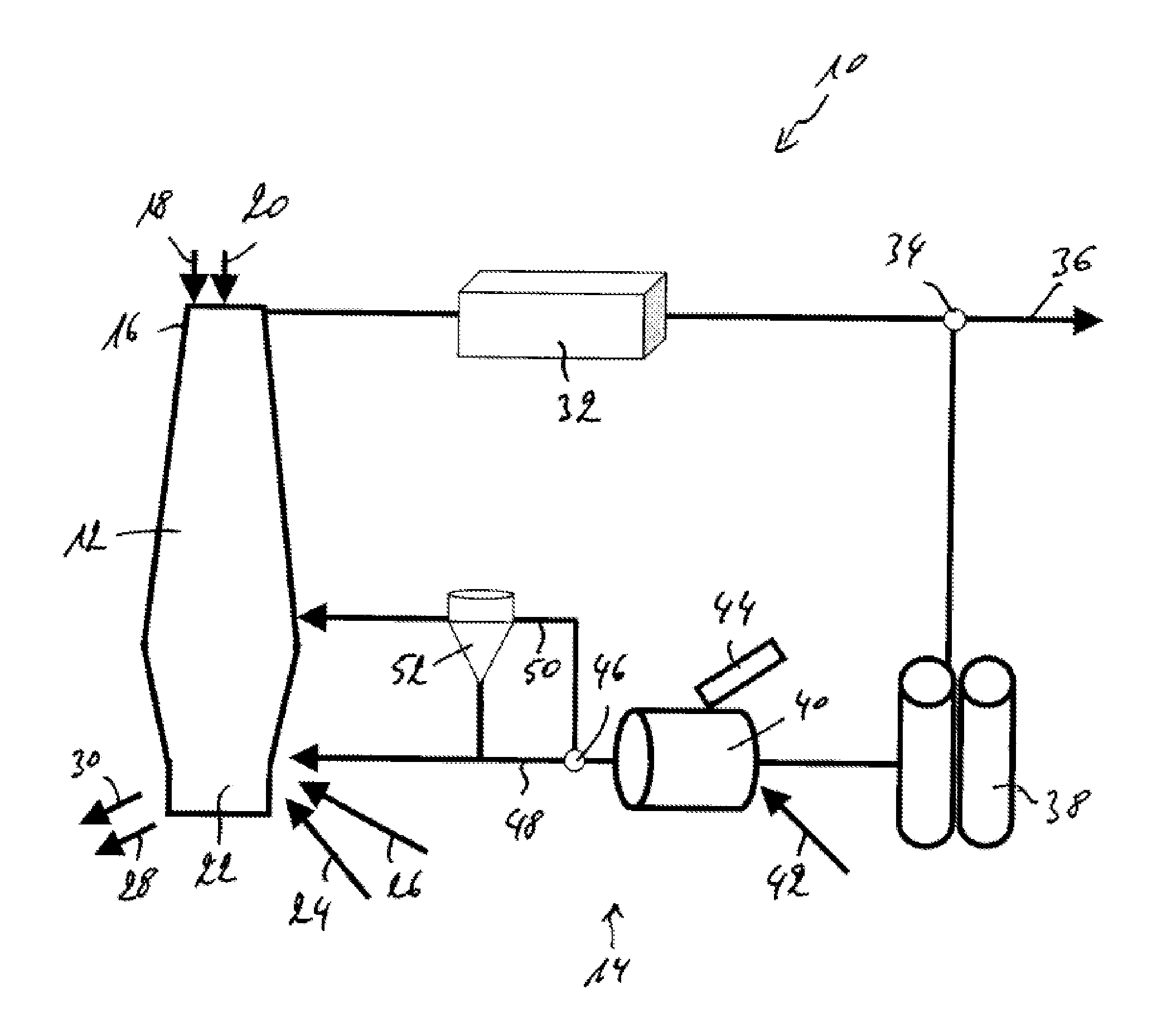Method for operating a blast furnace and blast furnace installation
a technology for blast furnaces and installation methods, applied in blast furnaces, climate sustainability, metal processing, etc., can solve the problems of flash gasification or partial devolatisation of volatile carbon containing materials, and achieve the effect of improving blast furnace installation
- Summary
- Abstract
- Description
- Claims
- Application Information
AI Technical Summary
Benefits of technology
Problems solved by technology
Method used
Image
Examples
Embodiment Construction
[0027]FIG. 1 generally shows a blast furnace installation 10 comprising a blast furnace 12 and a top gas recycling installation 14. The top end 16 of the blast furnace 12 generally receives a charge of coke 18 and a charge of ore 20, while the bottom end 22 of the blast furnace 12 generally receives fuel 24 and oxygen 26. At the bottom end 22, pig iron 28 and slag 30 is extracted from the blast furnace 12. The operation of the blast furnace itself is well known and will not be further described herein.
[0028]The top gas recycling installation 14 comprises means for recovering top gas from the blast furnace, for treating the recovered top gas and for injecting the treated top gas back into the blast furnace. The top gas recycling installation 14 is more closely described herebelow.
[0029]The blast furnace top gas is recovered from the top end 16 of the blast furnace 12 and first fed through a gas cleaner unit 32, wherein the amount of dust or foreign particles is reduced.
[0030]After pa...
PUM
| Property | Measurement | Unit |
|---|---|---|
| temperature | aaaaa | aaaaa |
| temperature | aaaaa | aaaaa |
| temperature | aaaaa | aaaaa |
Abstract
Description
Claims
Application Information
 Login to View More
Login to View More - R&D
- Intellectual Property
- Life Sciences
- Materials
- Tech Scout
- Unparalleled Data Quality
- Higher Quality Content
- 60% Fewer Hallucinations
Browse by: Latest US Patents, China's latest patents, Technical Efficacy Thesaurus, Application Domain, Technology Topic, Popular Technical Reports.
© 2025 PatSnap. All rights reserved.Legal|Privacy policy|Modern Slavery Act Transparency Statement|Sitemap|About US| Contact US: help@patsnap.com


